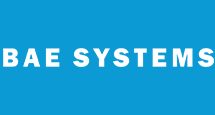“Global Skeletal Dysplasia Market is anticipated to grow on account of growing genetic disorders coupled with technological advancements and R&D in bringing new drug classes for treatment”, says Visiongain report
05 September 2019
Visiongain has launched a new pharma report Skeletal Dysplasia Market Report : By Type (Hypophosphatasia, Achondroplasia), by Symptoms (Skeletal Deformities, Dental Deformities) and by Geography.
Global Skeletal Dysplasia Market is anticipated to grow on account of growing genetic disorders coupled with technological advancements and R&D in bringing new drug classes for treatment. The global skeletal dysplasia market is anticipated to grow at a lucrative CAGR of over 7.61% and anticipated to reach USD xx Million by 2029.
Skeletal dysplasia, also known as osteochondrodysplasia, is a heterogeneous group of illnesses affecting bone and cartilage growth and development. There is a huge variability in severity and participation ranging from neonatal lethality to incidentally observed variations in adult development. Hundreds have been described of such dysplasia, but most are so rare that it is difficult to estimate the true incidence. The most common diagnoses included in this category are hypochondroplasia, achondroplasia, multiple epiphyseal dysplasia, pseudoachondroplasia, multiple hereditary exostosis, diastrophic dysplasia, osteogenesis imperfecta, enchondromatosis, and osteopetrosis.
A significant driving factor in the skeletal dysplasia industry is the increasing incidence of congenital disorder and birth defects. Birth defects affect about 1 in every 33 children in the U.S. every year, according to the Center of Disease Control & Prevention. The increasing amount of genetic disorders promotes the development of the market for skeletal dysplasia. Growing R&D in the field of new drug development is anticipated to boost skeletal dysplasia market growth. Changing lifestyle, rising cigarette and alcohol consumption are significant variables that increase the incidence of skeletal dysplasia.
North America retains the majority of market share followed by Europe and will continue to dominate in the future as a consequence of a number of research initiatives in the region, combined with public financing for R&D activities, increased awareness of the therapy of orthopedic and medical issues, increased spending on health care and the existence of important stakeholders engaged in clinical trials. Additionally, sophisticated health care facilities, early diagnosis awareness, and government recognition of orphan drugs is anticipated to boost the U.S. skeletal dysplasia industry. The estimated incidence prevalence of this rare bone disease is 1 in 1,600.
In Europe, the rare disease affects a small population. It affects 30 million people, of which 6,800 have been identified. In Europe, a tiny population is affected by the rare disease. It impacts 30 million individuals, 6,800 of whom were recognized. The Asia Pacific skeletal dysplasia market is expected to develop rapidly over the forecast era. The incidence of rare illnesses including skeletal dysplasia, early diagnosis, and child prevalence are factors that drive the region's market growth. It is anticipated that the expansion of domestic and foreign collaborations and technological advances will increase the Asia Pacific skeletal dysplasia market.
Currently, key players are forming various strategies such as acquisitions, mergers, partnerships, collaborations and launching new products in order to strengthen their position in the global skeletal dysplasia market. Companies are also expanding their R&D, distribution, and management facilities in order to expand their business and to hold a competitive edge in the market.
The comprehensive market report features companies such as Takeda Pharmaceutical, Johnson and Johnson, Novartis, AbbVie, Pfizer, Amgen, Sanofi, Eli Lilly, Novartis, and Merck among other prominent players. Also the research study offers market estimation and forecast for the period ranging 2019–2029 for global markets such as North America, Latin America, Western Europe, Eastern Europe, Asia Pacific and MEA along with regional sub-markets as U.S., Canada, Brazil, Mexico, Germany, UK, France, Italy, Spain, Nordic, Benelux, Russia, Poland, India, Japan, China, Australia, ASEAN, GCC, South Africa and North Africa.
Notes for Editors
If you are interested in a more detailed overview of this report, please send an e-mail to sara.peerun@visiongain.com or call her on +44 (0) 207 336 6100.
About Visiongain
Visiongain is one of the fastest growing and most innovative independent media companies in Europe. Based in London, UK, Visiongain produces a host of business-to-business reports focusing on the automotive, aviation, chemicals, cyber, defence, energy, food & drink, materials, packaging, pharmaceutical and utilities sectors.
Visiongain publishes reports produced by analysts who are qualified experts in their field. Visiongain has firmly established itself as the first port of call for the business professional who needs independent, high-quality, original material to rely and depend on.
Recent News
Visiongain Publishes Drug Delivery Technologies Market Report 2024-2034
The global Drug Delivery Technologies market is estimated at US$1,729.6 billion in 2024 and is projected to grow at a CAGR of 5.5% during the forecast period 2024-2034.
23 April 2024
Read
Visiongain Publishes Cell Therapy Technologies Market Report 2024-2034
The cell therapy technologies market is estimated at US$7,041.3 million in 2024 and is projected to grow at a CAGR of 10.7% during the forecast period 2024-2034.
18 April 2024
Read
Visiongain Publishes Automation in Biopharma Industry Market Report 2024-2034
The global Automation in Biopharma Industry market is estimated at US$1,954.3 million in 2024 and is projected to grow at a CAGR of 7% during the forecast period 2024-2034.
17 April 2024
Read
Visiongain Publishes Anti-obesity Drugs Market Report 2024-2034
The global Anti-obesity Drugs market is estimated at US$11,540.2 million in 2024 and is expected to register a CAGR of 21.2% from 2024 to 2034.
















